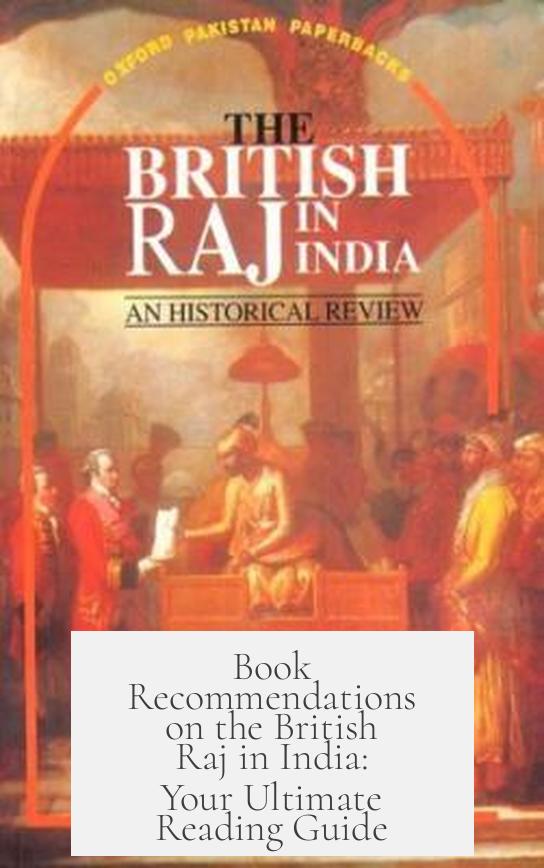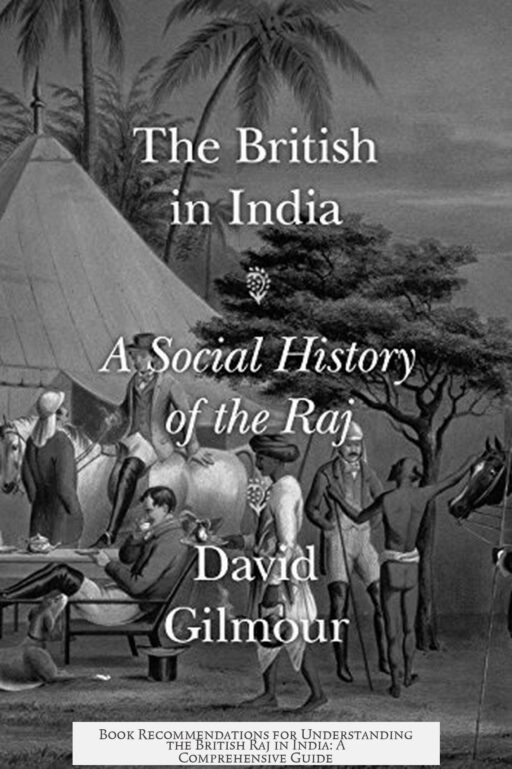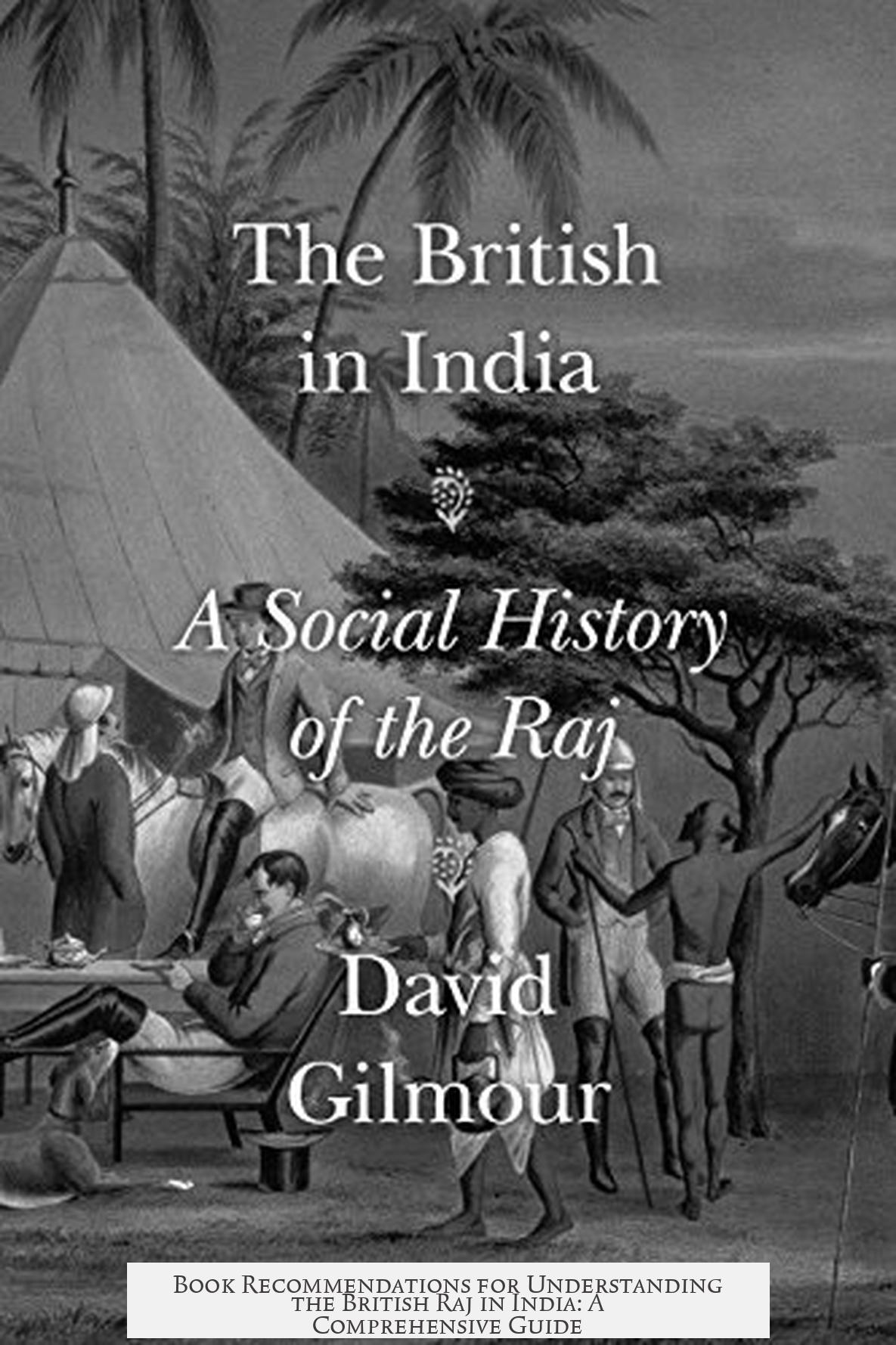Book recommendations on the British Raj in India cover a wide range of perspectives and depths, reflecting the complexity of nearly 350 years of history involving India, Britain, and the English East India Company. A thorough understanding requires books that balance scope with detail, academic rigor, and narrative clarity, recognizing that no single book can claim complete accuracy or absolute consensus on all aspects.
Books on the British Raj often face challenges due to the sheer span of time involved and varying interpretations of events. Historians frequently disagree on details like army sizes or the founding dates of key colonial cities such as Calcutta, Madras, and Surat. These differences underline the importance of consulting multiple sources for a nuanced picture.
One classic recommendation is A history of India by Hermann Kulke and Dietmar Rothermund (1986). Despite being somewhat dated and concise, it maintains high academic standards. Its discussion of the British East India Company (BEIC) focuses on the late 18th century, particularly the relationship between the Company and the British state during and after Warren Hastings’s administration starting in 1772. This work emphasizes British colonial policies and dedicates significant attention to the Indian Rebellion of 1857–58, a pivotal moment in the Raj’s history. However, some introductory context regarding the early BEIC period is limited.
For readers seeking a more exhaustive, detailed account, Penderel Moon’s The British conquest and dominion of India (1989) offers a comprehensive narrative. At around 1,200 pages, this book chronicles the expansion of British power through military campaigns and political developments. Moon’s background as an administrative official in India during the late Raj period grants his account an informed perspective. The book explores key figures, such as Warren Hastings, balancing military history with analysis of their administrative and political roles. Due to its length and density, it is suitable for readers ready for a deep dive.
A more focused study of the East India Company’s transformation comes from Philip J. Stern’s The company-state: Corporate sovereignty and the early modern foundations of the British Empire in India (2011). Stern’s work explores how the BEIC evolved from a trade company into a powerful entity wielding quasi-governmental authority, setting the stage for British imperial rule. His analysis sheds light on corporate sovereignty and its role in colonialism’s formation. This book is widely regarded as essential reading for anyone studying the foundations of the British Raj, praised for its depth and interpretive insight.
John Keay’s The honourable company: A history of the English East India Company (1993) strikes a balance between general history and detailed exploration of the corporation’s 250-plus years. It covers economic, political, and military aspects, often citing lesser-known facts and events. Keay’s narrative is engaging yet thorough, making it accessible without sacrificing complexity. This work complements Stern’s by offering a broader chronological perspective on the Company and its impact on India.
| Book | Author(s) | Focus | Strengths | Limitations |
|---|---|---|---|---|
| A history of India | Hermann Kulke, Dietmar Rothermund | Colonial policy, Indian Rebellion 1857-58 | Concise, academically sound | Less detail on early BEIC |
| The British conquest and dominion of India | Penderel Moon | Military campaigns, political figures | Comprehensive, informed by author’s experience | Heavy read, lengthy |
| The company-state | Philip J. Stern | BEIC’s corporate sovereignty and transformation | Essential, analytical depth | Focused narrowly on early modern period |
| The honourable company | John Keay | English East India Company history | Detailed, engaging narrative | General history, may lack deep analysis in parts |
When selecting books on the British Raj, consider the intended focus: political history, military campaigns, corporate evolution, or colonial policy. Combining these titles offers both detailed and broad understandings, from the early East India Company era to the complex governance of the Raj.
These recommendations emphasize that no single work fully encapsulates all aspects of the British Raj. Readers will benefit from cross-referencing multiple accounts and interpretations to grasp this multifaceted history better.
- British Raj history spans over three centuries, requiring diverse perspectives for full coverage.
- Kulke and Rothermund provide a concise yet scholarly introduction focusing on colonial policies and the 1857 rebellion.
- Moon’s extensive narrative details conquests and political figures, suitable for thorough study.
- Stern highlights the East India Company’s corporate sovereignty, a key to understanding British colonial foundations.
- Keay offers an engaging, detailed history of the East India Company across centuries.
- Cross-referencing these works enriches understanding and addresses differing historical interpretations.
Book Recommendations on the British Raj in India: Your Ultimate Reading Guide

Wondering which books can offer you a deep dive into the British Raj in India without leaving you lost in a maze of dates and details? Fear not! Let’s cut to the chase and recommend some top-notch reads that tackle the British Raj with accuracy, insight, and a touch of narrative gusto. These books will illuminate the complex relationship between Britain and India over centuries and satisfy your curiosity with well-researched details and engaging storytelling.
Before we dig into the books themselves, let’s address the elephant in the room. The history of the British Raj is a sprawling saga stretching over 350 years. Covering this vast timeline with precision is like trying to fit the entire Taj Mahal into a jewelry box — it’s tricky and some details might slip away or differ between authors. Even celebrated historians don’t always see eye to eye on specifics like the size of the British Indian army or the foundation dates of Calcutta, Madras, and Surat. So, keep an open mind and enjoy the journey!
1. A History of India – Kulke and Rothermund (1986)
This gem, despite being published back in 1986 and relatively concise, packs a solid punch in academic quality. The authors zoom in on the East India Company (EIC) relationship with the British state from the late 18th century. If you want to understand how British colonial policies evolved during Lord Hastings’ tenure and beyond, this book is a solid pick.
One standout feature here is its detailed focus on the 1857-58 Indian Rebellion—a pivotal moment in Indian history. Not only does it describe the uprising, but also the intricate ways this event reshaped British rule. However, if you’re expecting a hand-holding introduction to the EIC itself, you might find the book a bit brief on that front. For context starters, it’s like showing you the climax of a Bollywood film without much preamble. Still, it’s a worthy read for those after scholarly yet accessible information.
2. The British Conquest and Dominion of India – Penderel Moon (1989)
Ready for a hefty, about 1200-page marathon? Moon’s book is a detailed chronological adventure through the military and political campaigns of British India. But it’s not just dusty battle logs; Moon includes insightful profiles of key figures such as Warren Hastings. What’s fascinating is Moon’s background—he worked for the British administration during the Raj and lived in India post-independence, lending a unique insider perspective.
If you dig dense historical narratives that combine military campaigns with political maneuvering, this one’s a treasure trove. Just be warned: it’s a commitment, like a six-season binge-watch. For some, it might be a bit “heavy,” but for serious history buffs, Moon provides a vivid, step-by-step understanding of British domination.
3. The Company-State – Philip J. Stern (2011)
Consider this your intellectual VIP pass to the origins of the British Empire in India. Stern digs deep into the transformation of the East India Company from a mere trading organization into a corporate sovereign entity. He explains how and why the company evolved, setting the stage for nearly a century of conquest and control.
This work is a must-read for anyone who wants to investigate the “how” and “why” behind the British Raj rather than just the “what.” Stern’s analysis goes beyond surface-level storytelling. It’s sharp, focused, and highly respected. Think of this book as a magnifying glass revealing intricate inner workings of power and corporate strategy that fueled empire building, perfect for readers who crave both business history and colonial politics.
4. The Honourable Company – John Keay (1993)

Keay’s book walks an elegant line, offering a sweeping history of the English East India Company over two and a half centuries yet peppered with rare, fascinating specifics you won’t easily find elsewhere. The narrative flows smoothly, making it bearable for those wary of dense academic tomes without sacrificing detail.
This book isn’t just a dry chronology; it explores the business, politics, and personalities behind one of history’s most powerful corporations. Keay skillfully reveals how commerce and conquest intertwined, producing a gripping tale of ambition, greed, and empire-building.
For anyone obsessed with the East India Company’s story, this is a highly recommended and engaging read. It complements the other recommendations by providing broader context and intriguing nuggets that enrich your understanding of British India’s foundations.
Final Thoughts — What’s Your Angle?
Are you a student wanting a survey of the British Raj with ample academic rigor? Kulke and Rothermund’s concise work might be your best friend. If military campaigns and political machinations fascinate you (and you can handle a tome), Moon will be a treasure chest. For the origins and corporate strategy behind the Raj, Stern’s analysis is unmatched. And if you want a narrative balance with rare corporate history gems, Keay fits perfectly.
Choosing the right book depends on your interest. Are you curious about the politics, the military, the business side, or a general overview? Do you prefer a quick academic survey or a detailed deep dive? These recommendations cover those bases with distinct flavors. The British Raj is multi-faceted—your book should be too.
So, what’s your reading appetite craving? An in-depth military saga, a corporate empire story, or a well-rounded history? Each book here is like a different lens revealing the many shades of British India.
Happy reading! And remember, history isn’t just about facts—it’s about understanding complex stories woven over centuries.



